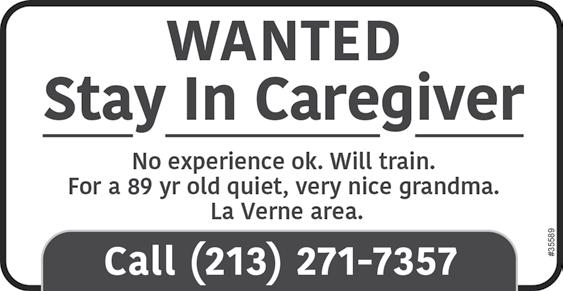
5 minute read
Staying safe through California’s March...
direct information on how to keep ourselves safe, especially those who are most vulnerable during these natural disasters.
“We’ve got some very serious weather coming our way. The reality is that this is gonna impact people throughout the state,” he said, adding how many of the areas that were already hit would once again be affected. Taylor described how with storms occurring more often, there will also be an increase in the number of people sheltering.
Advertisement
“Because it's such a widespread event and the impact area is spread throughout the entire state, there is going to be a limit in what the government can do to help people in these situations,” Taylor said.
He added, “What can city, county, and state governments do to assist and what can we as individuals do to prepare to be safe before, during, and after disasters."
Californians can prepare in these situations, especially those with access and functional needs, such as the following:
• Physical, developmental, or intellectual disabilities.
• Do not have access to reliable transportation.
• Those who do not have English as their primary language.
• Those with a chronic injury or illness.
• Are economically depressed.
• Are experiencing homelessness.

“These are individuals who are going to be at highest risk for negative impact in these disasters,” Taylor said, sharing how there are three areas in which those with these needs can prepare for during the recent and ongoing storms.
“For many individuals, they are energy dependent,” Taylor said, detailing how access and functional needs require power for devices they use daily, such as ventilators, assisted devices or technology, and durable medical equipment. “If there is no power, that presents life safety risks,” he added, recommending that this equipment should always be charged, especially while there is power present.
However, those at risk can also connect with programs like the Disability Disaster Access & Resources Program, which provides a variety of different resources.
A few of these resources include backup batteries for important equipment detailed above, evacuation services, transportation, hotel and food vouchers, and gas cards.
“When it comes to loss of power, activate friends, family, care providers so they can assist you if the power goes out,” Taylor added how a support network is also crucial, describing how these should be people you know, trust, and can rely on as if or when the power goes out, they’ll immediately know to come support you.
The next thing that Taylor emphasized was to have an evacuation plan. During these times, people will need to be evacuated and those who are at a higher risk will need more assistance. “Make a list of friends, family members, coworkers, neighbors, or others that can help you evacuate,” he explained, adding how
“The idea here is that we can’t expect any one of those individuals to be available 24 hours a day, but by having a network of people it’s likely at least one of those individuals is going to be available to help you evacuate when the time comes.”
Taylor not only reminded participants to rely on a support system, but also encouraged them to follow the guidance of local authorities as storms are unprecedented.
“Learn different evacuation routes to leave your community and as much as you can, practice your plan regularly,” he said.
Taylor described how signing up for emergency alerts on the Cal Alerts website is also one other important step to take.
“It gives you reliable information so you know what’s coming, how to prepare, and what appropriate steps you need to take for your health and safety,” he said.
“When your life is at risk, you can't receive too many alerts,” Taylor declared, stating how Cal Alerts is only one of many alerts that people can sign up for, where the more information, the likelihood of being prepared increases. “Those small steps will make all the difference. Plan today so you can be prepared tomorrow,” he encouraged audience members.
CalHHS resources
With the abundance of resources each speaker has already provided, Corrin Buchanan, deputy secretary for the California Health and Human Services Agency (CalHHs), provided a few more towards the end of the webinar.
“We have mobilized much of our agency (CalHHS) to continue to respond to these storms,” Buchanan declared, adding that the Department of Social Services has also supported 33 shelters that have been stood up throughout the state.
“608 individuals were supported across these sites last night. In addition, 12 shelters are on stand-by and ready to be stood up as quickly as needed,” she expressed, emphasizing the full support of the state for those affected by the storms.
Buchanan further described how various agencies have been pulling through to help Californians during this time.
“The team at the Emergency Medical Services Authority has prepositioned assets and staged ambulance strike teams to be prepared to augment local capacity and ensure the EMS system is able to respond,” she described, adding how the Department of Public Health has also played a big role in helping those impacted by proactively working with their healthcare partners in ensuring that they maintain operations and have sufficient capacity.
“CalHHS, has prioritized work across 12 departments and five offices and with our statewide partners, to ensure that we are collectively preparing the most vulnerable in our communities for the impact of these storms,” Buchanan emphasized, declaring how the agency has also created a task force, the Priority Populations Task Force, to help those who are most vulnerable.
“CalHHS and CalOES are the co-chairs of this task force and we have 20 other state agencies that participate as well,” she explained, highlighting how the task force is primarily focused on four priority populations:
• People who are homeless or unsheltered.
• People who are older or medically vulnerable.
• Those with disabilities (both visible and invisible).
• Those who are residing in congregate facilities (both medical and non-medical).
Within this task force, Buchanan additionally described how they have three main goals. The first is to be able to develop and spread information to local partners regarding weather conditions as well as to emphasize state and federal resources available to the populations listed above.
The second goal has the task force working together with local and county governments to provide technical assistance and support in local planning efforts to coordinate a timely response for information and resource requests.
Lastly, the task force is also evaluating these requests from locals to make recommendations and support in the deployment of resources that may be scarce.
Buchanan then described some of the resources that are available for those who have been impacted. “It is not too late to be prepared,” she reiterated, directing people to the CalHHS website, www.chhs. ca.gov, which has guides for emergency resources, in both English and Spanish, as well as a downloadable template for creating a personal emergency plan.
The Department of Social Services website (www.cdss.ca.org) is another resource that is useful for finding information about available shelters and warming centers. In addition to these various websites, Buchanan also referenced a few numbers that can provide support for many during these times:
• Statewide Long-Term Care Ombudsman CRISIS line for those who are worried about the well-being of a loved one that is living in a long term care facility. The number is 1-800-231-4024 and it is available 24/7.




• Cal Hope: The number is 1-833-317HOPE (4673) or one can visit their website at www.calhope.org.
• The Friendship Line, which is meant for free crisis intervention for nonemergency support, specifically for older adults. The line can be reached at 1-888670-1360. (Amry Ferido/AJPress)





